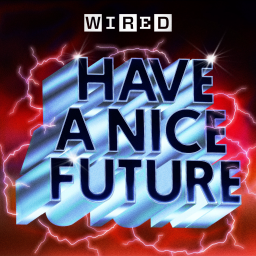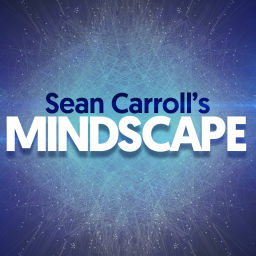
by Sebastian Hassinger
Your hosts, Sebastian Hassinger and Kevin Rowney, interview brilliant research scientists, software developers, engineers and others actively exploring the possibilities of our new quantum era. We will cover topics in quantum computing, networking and sensing, focusing on hardware, algorithms and general theory. The show aims for accessibility - neither of us are physicists! - and we'll try to provide context for the terminology and glimpses at the fascinating history of this new field as it evolves in real time.
Language
🇺🇲
Publishing Since
8/2/2022
Email Addresses
1 available
Phone Numbers
0 available

April 14, 2025
<p>Welcome to episode 48 of The New Quantum Era podcast! Another episode recorded at the APS Global Summit in March, today's special guest is true quantum pioneer, John Martinis, co-founder and CTO of <a href="https://qolab.ai/">QoLab</a>, a superconducting qubit company seeking to build a million qubit device. In this enlightening conversation, we explore the strategic shifts, collaborative efforts, and technological innovations that are pushing the boundaries of quantum computing closer to building scalable, million-qubit systems. This episode was made with support form <a href="https://www.aps.org/">The American Physical Society</a> and <a href="https://www.quantum-machines.co/">Quantum Machines, Inc.</a> (BTW I know I said episode 49 in the intro to this episode, I noticed it too late to fix without a further delay in posting the interview!)</p><p><strong>Key Highlights</strong></p><ul><li><strong>Emerging from Stealth Mode & Million-Qubit System Paper</strong>:<ul><li>Discussion on QoLab’s transition from stealth mode and their comprehensive paper on building scalable million-qubit systems.</li><li>Focus on a systematic approach covering the entire stack.</li></ul></li><li><strong>Collaboration with Semiconductor Companies</strong>:<ul><li>Unique business model emphasizing collaboration with semiconductor companies to leverage external expertise.</li><li>Comparison with bigger players like Google, who can fund the entire stack internally.</li></ul></li><li><strong>Innovative Technological Approaches</strong>:<ul><li>Integration of wafer-scale technology and advanced semiconductor manufacturing processes.</li><li>Emphasis on adjustable qubits and adjustable couplers for optimizing control and scalability.</li></ul></li><li><strong>Scaling Challenges and Solutions</strong>:<ul><li>Strategies for achieving scale, including using large dilution refrigerators and exploring optical communication for modular design.</li><li>Plans to address error correction and wiring challenges using brute force scaling and advanced materials.</li></ul></li><li><strong>Future Vision and Speeding Up Development</strong>:<ul><li>QoLab’s goal to significantly accelerate the timeline toward achieving a million-qubit system.</li><li>Insight into collaborations with HP Enterprises, NVIDIA, Quantum Machines, and others to combine expertise in hardware and software.</li></ul></li><li><strong>Research Papers Mentioned in this Episode</strong>:<ul><li><a href="https://qolab.ai/how-to-build-a-quantum-supercomputer-scaling-challenges-and-opportunities/">Position paper on building scalable million-qubit systems </a></li></ul></li></ul><p><br></p>

April 2, 2025
<p>In this episode of The New Quantum Era podcast, your host Sebastian Hassinger interviews two of the field's most well-known figures, John Preskill and Rob Schoelkopf, about the transition of quantum computing into a new phase that John is calling "megaquop," which stands for "a million quantum operations." Our conversation delves into what this new phase entails, the challenges and opportunities it presents, and the innovative approaches being explored to make quantum computing perform better and become more useful. This episode was made with the kind support of the <a href="https://www.aps.org/">American Physical Society</a> and <a href="https://quantumcircuits.com/">Quantum Circuits, Inc. </a>Here’s what you can expect from this insightful discussion:</p><p><br></p><ul><li><strong>Introduction of the Megaquop Era</strong>: John explains the transition from the NISQ era to the megaquop era, emphasizing the need for quantum error correction and the goal of achieving computations with around a million operations.</li><li><strong>Quantum Error Correction</strong>: Both John and Rob discuss the importance of quantum error correction, the challenges involved, and the innovative approaches being taken, such as dual rail and cat qubits.</li><li><strong>Superconducting Qubits and Dual Rail Approach</strong>: Rob shares insights into Quantum Circuits' work on dual rail superconducting qubits, which aim to make error correction more efficient by detecting erasure errors.</li><li><strong>Scientific and Practical Implications</strong>: The conversation touches on the scientific value of current quantum devices and the potential applications and discoveries that could emerge from the megaquop era.</li><li><strong>Future Directions and Challenges</strong>: The discussion also covers the future of quantum computing, including the need for better connectivity and the challenges of scaling up quantum devices.</li></ul><p><br></p><p>Mentioned in this Episode:</p><ul><li><a href="https://arxiv.org/abs/2502.17368"><strong>Beyond NISQ: The Megaquop Machine</strong></a><strong>: </strong>John Preskill's paper adapting his keynote from Q2B Silicon Valley 2024</li><li><a href="https://quantumcircuits.com/"><strong>Quantum Circuits, Inc.</strong></a>: Rob's company, which is working on dual rail superconducting qubits.</li></ul><p><br></p><p><br></p>

March 26, 2025
<p>In this episode of The New Quantum Era podcast, host Sebastian Hassinger speaks with <a href="https://physics.yale.edu/people/steven-girvin">Steve Girvin</a>, professor of physics at Yale University, about quantum memory - a critical but often overlooked component of quantum computing architecture. This episode was created with support from the <a href="https://www.aps.org/">American Physical Society</a> and <a href="https://quantumcircuits.com/">Quantum Circuits, Inc.</a></p><p>Episode Highlights</p><ul><li><strong>Introduction to Quantum Memory</strong>: Steve explains that quantum memory is essential for quantum computers, similar to how RAM functions in classical computers. It serves as intermediate storage while the CPU works on other data.</li><li><strong>Coherence Challenges</strong>: Quantum bits (qubits) struggle to faithfully hold information for extended periods. Quantum memory faces both bit flips (like classical computers) and phase flips (unique to quantum systems).</li><li><strong>The Fundamental Theorem</strong>: Steve notes there’s “no such thing as too much coherence” in quantum computing - longer coherence times are always beneficial.</li><li><strong>Quantum Random Access Memory (QRAM)</strong>: Unlike classical RAM, QRAM can handle quantum superpositions, allowing it to process multiple addresses simultaneously and create entangled states of addresses and their associated data.</li><li><strong>QRAM Applications</strong>: Quantum memory enables state preparation, construction of oracles, and processing of big data in quantum algorithms for machine learning and linear algebra.</li><li><strong>Tree Architecture</strong>: QRAM is structured like an upside-down binary tree with routers at each node. The “bucket brigade” approach guides quantum bits through the tree to retrieve data.</li><li><strong>Error Resilience</strong>: Surprisingly, the error situation in QRAM is less catastrophic than initially feared. With a million leaf nodes and 0.1% error rate per component, only about 1,000 errors would occur, but the shallow circuit depth (only requiring n hops for n address bits) makes the system more resilient.</li><li><strong>Dual-Rail Approach</strong>: Recent work by Danny Weiss demonstrates using dual resonator (dual-rail) qubits where a microwave photon exists in superposition between two boxes, achieving 99.9% fidelity for each hop in the tree.</li><li><strong>Historical Context</strong>: Steve draws parallels to early classical computing memory systems developed by von Neumann at Princeton’s IAS, including mercury delay line memory and early fault tolerance concepts.</li><li><strong>Future Outlook</strong>: While building quantum memory presents significant challenges, Steve remains optimistic about progress, noting that improving base qubit quality first and then scaling is their preferred approach.</li></ul><p><br></p><p><br>Key Concepts</p><ul><li><strong>Quantum Memory</strong>: Storage for quantum information that maintains coherence</li><li><strong>QRAM (Quantum Random Access Memory)</strong>: Architecture that allows quantum superpositions of addresses to access corresponding data</li><li><strong>Coherence Time</strong>: How long a qubit can maintain its quantum state</li><li><strong>Bucket Brigade</strong>: Method for routing quantum information through a tree structure</li><li><strong>Dual-Rail Qubits</strong>: Encoding quantum information in the presence of a photon in one of two resonators</li></ul><p><br></p><p>References</p><ul><li>Weiss, D.K., Puri, S., Girvin, S.M. (2024). “Quantum random access memory architectures using superconducting cavities.” arXiv:2310.08288</li><li>Xu, S., Hann, C.T., Foxman, B., Girvin, S.M., Ding, Y. (2023). “Systems Architecture for Quantum Random Access Memory.” arXiv:2306.03242</li><li>Brock, B., et al. (2024). “Quantum Error Correction of Qudits Beyond Break-even.” arXiv:2409.15065</li></ul><p><br></p>

Quanta Magazine

Steven Strogatz, Janna Levin and Quanta Magazine

WIRED

Physics World

Sean Carroll | Wondery

Lawrence M. Krauss

Tristan Harris and Aza Raskin, The Center for Humane Technology

Vox

Stuart Gary

Theories of Everything

Vox

WNYC Studios

The New York Times

WNYC Studios and The New Yorker
Pod Engine is not affiliated with, endorsed by, or officially connected with any of the podcasts displayed on this platform. We operate independently as a podcast discovery and analytics service.
All podcast artwork, thumbnails, and content displayed on this page are the property of their respective owners and are protected by applicable copyright laws. This includes, but is not limited to, podcast cover art, episode artwork, show descriptions, episode titles, transcripts, audio snippets, and any other content originating from the podcast creators or their licensors.
We display this content under fair use principles and/or implied license for the purpose of podcast discovery, information, and commentary. We make no claim of ownership over any podcast content, artwork, or related materials shown on this platform. All trademarks, service marks, and trade names are the property of their respective owners.
While we strive to ensure all content usage is properly authorized, if you are a rights holder and believe your content is being used inappropriately or without proper authorization, please contact us immediately at [email protected] for prompt review and appropriate action, which may include content removal or proper attribution.
By accessing and using this platform, you acknowledge and agree to respect all applicable copyright laws and intellectual property rights of content owners. Any unauthorized reproduction, distribution, or commercial use of the content displayed on this platform is strictly prohibited.